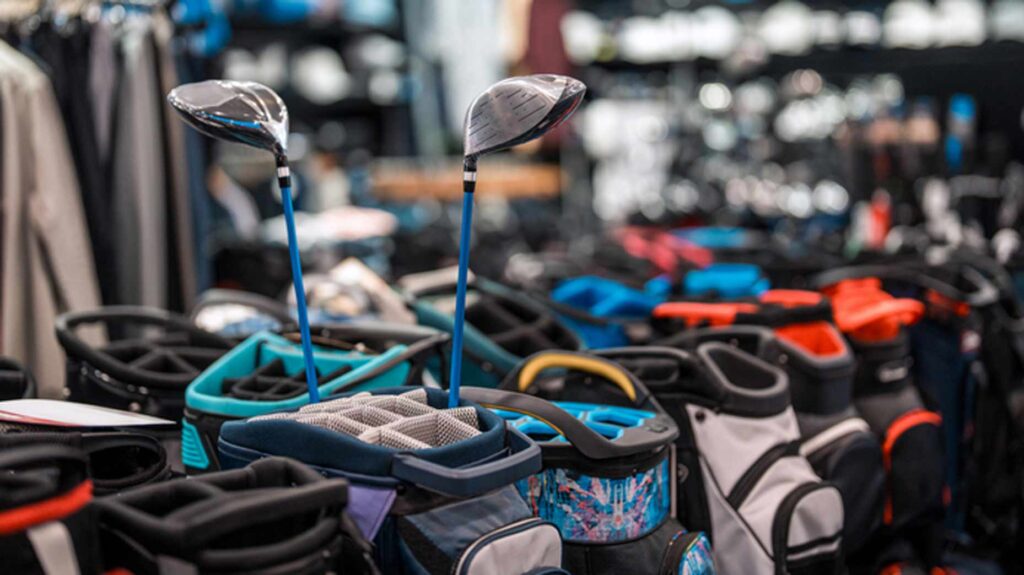Optimize Your Golf Game: The Essential Guide to Smart Club Gapping for Slower Swing Speeds
Introduction: Rethinking Your Set
When you walk into a big box golf store, you’re often confronted with the notion that every golfer needs to carry a complete set of 14 clubs. However, if your driver club head speed is below 90 mph, it’s time to reconsider that assumption. Having a full set may appear complete on paper, but if multiple clubs in your bag overlap in distance, you’re not enhancing your game — you’re creating confusion and limiting your potential.
Let’s explore how to build a golf club set that truly works for you, focusing on the fundamentals of club head speed, gapping, and loft management.
Why Club Head Speed is Crucial
The speed at which you swing the club affects nearly every aspect of your game — launch angle, spin rates, peak height, descent angle, and, ultimately, carry distance. Faster swings create greater gaps between clubs, allowing for better separation between trajectories. Conversely, if your swing speed falls below 90 mph, those gaps become minimal, especially with long irons.
For example, if you swing at 85 mph with a driver, you may discover that your 4-iron and 5-iron carry the same distance, leading to redundancy in your set. Understanding this is where the concept of proper gapping becomes your secret weapon.
Gapping 101: Ball Speed vs. Club Numbers
Most golfers tend to think in loft-based terms, calculating gaps (typically around 4°) between their irons. However, this only works if you have the clubhead speed to create noticeable gaps. Instead, pay attention to ball speed, aiming for around 5 mph of difference between clubs. This should translate to approximately 10-12 yards of carry distance separation, allowing for more strategic club selection on the course.
If two clubs offer similar ball speed and are within 5 yards of each other, it’s time to evaluate one of those clubs. Utilize the space for a club that provides higher launch angles or greater spin, like a 7-wood instead of a 4-iron, or a hybrid in place of a 5-iron.
Embracing Higher Loft and Spin
Many players shy away from higher spin rates due to the misconception that spin equates to lost distance. Yet, if you swing at 85-90 mph, spin can be your ally, ensuring that the ball stays airborne long enough to achieve optimal carry. For instance, hitting your 5-iron at 100 mph can result in a "rock-like" fall with insufficient spin. However, combining the right launch and spin can lead to higher flights that carry farther — an essential metric for slower swing speeds.
Higher loft options, such as hybrids or high-lofted woods, can often outperform low-lofted clubs in terms of distance and control, making them valuable additions to your bag.
Designing a Smarter Club Set: The Essentials
Driver
Although the driver remains a staple, it requires the right fit. Ideally, for swing speeds under 90 mph, a loft range between 10.5° and 12° will optimize launch and spin. Search for drivers that provide stability and vertical launch consistency.
Fairway Woods
Consider replacing a traditional 15° 3-wood with a 16.5° or 17.5° 4-wood, which is generally easier to launch for slower swing speeds. Adding a 7-wood (approximately 21°) or even a 9-wood (around 24°) can provide higher launches that hold greens effectively.
Hybrids
Long irons (3-5) can often present challenges for players with slower swing speeds. Transition these to hybrids varying from 22° to 30°. They’re user-friendly and help maintain consistent gapping.
Irons
Start your iron set where there’s a noticeable jump in distance — typically at 6- or 7-iron. Ensure consistent loft spacing that promotes good carry and descent angles.
Wedges
Avoid cluttering your bag with excess wedges unless you utilize them. A simple setup such as a pitching wedge (PW), gap wedge (GW), and sand wedge (SW) may be all you need. Consider adding a lob wedge if you practice with it consistently.
Putter
Everyone needs a dependable putter. Ensure it’s fit for your height, lie angle, and feel preferences to maximize performance on the greens.
The Big Picture: Less is More
If you’re swinging below 90 mph and carrying a full 14-club complement, you likely have overlapping distances that complicate your game. A revised set of 11-12 clubs, designed for optimal gapping and specialized purpose, can significantly enhance your game.
Gapping is more than just managing distance; it’s about finding clubs that will give you the best launch, spin, and separation. Lean into higher lofts, prioritize launch conditions, and remember: the goal is not to emulate professional setups, but to find what allows you to score best.
The Takeaway: Personalized Setup for Better Scores
Enhancing your golf performance doesn’t require tossing out all the clubs you once deemed essential. Instead, focus on crafting a smarter, more personalized bag that suits your swing speed, ensuring that every club serves a distinct purpose. By accepting that fewer clubs can often lead to smarter play, you’ll be on the path to better scores.
Conclusion: Ready for the Next Step?
Are you ready to optimize your golf bag? Explore the benefits of a personalized fitting with True Spec Golf to discover what truly enhances your game, providing you the tools needed to elevate your performance while enjoying every round on the course.
Fewer clubs and smarter setups lead to better scores — don’t hesitate to make the changes that will transform your game.


